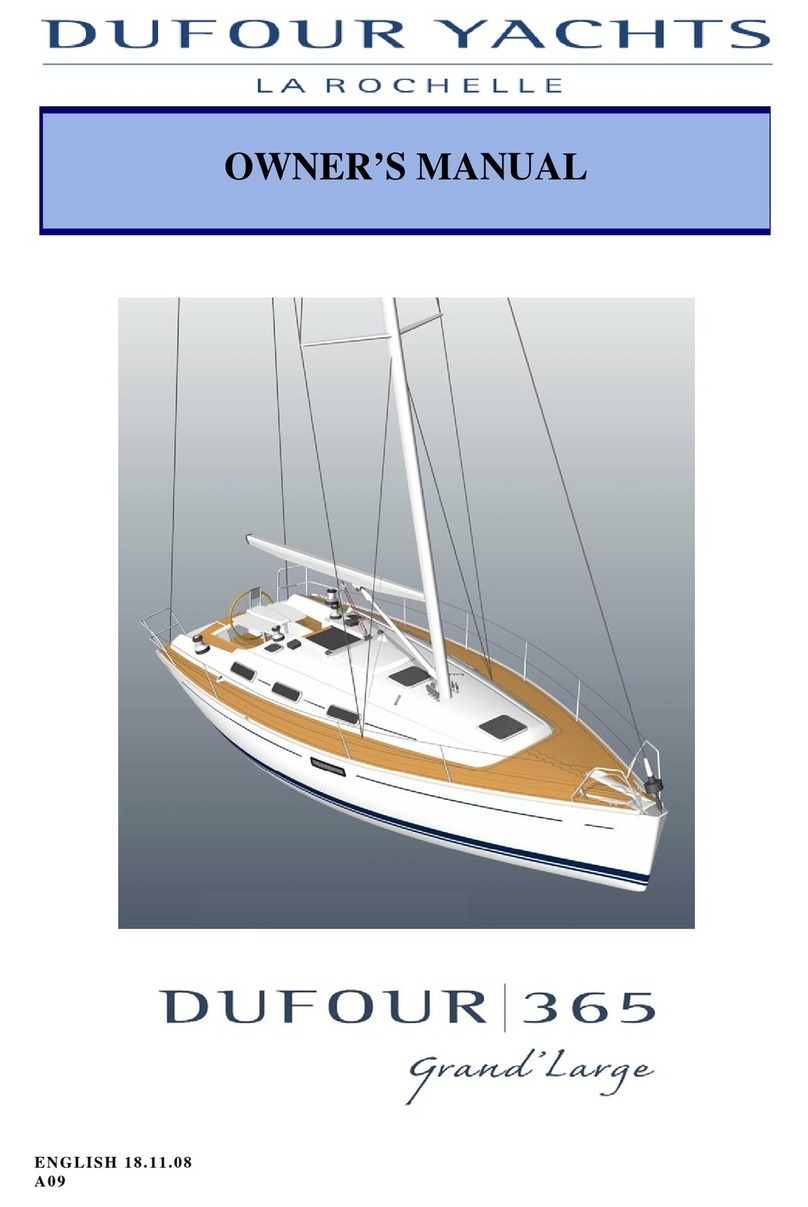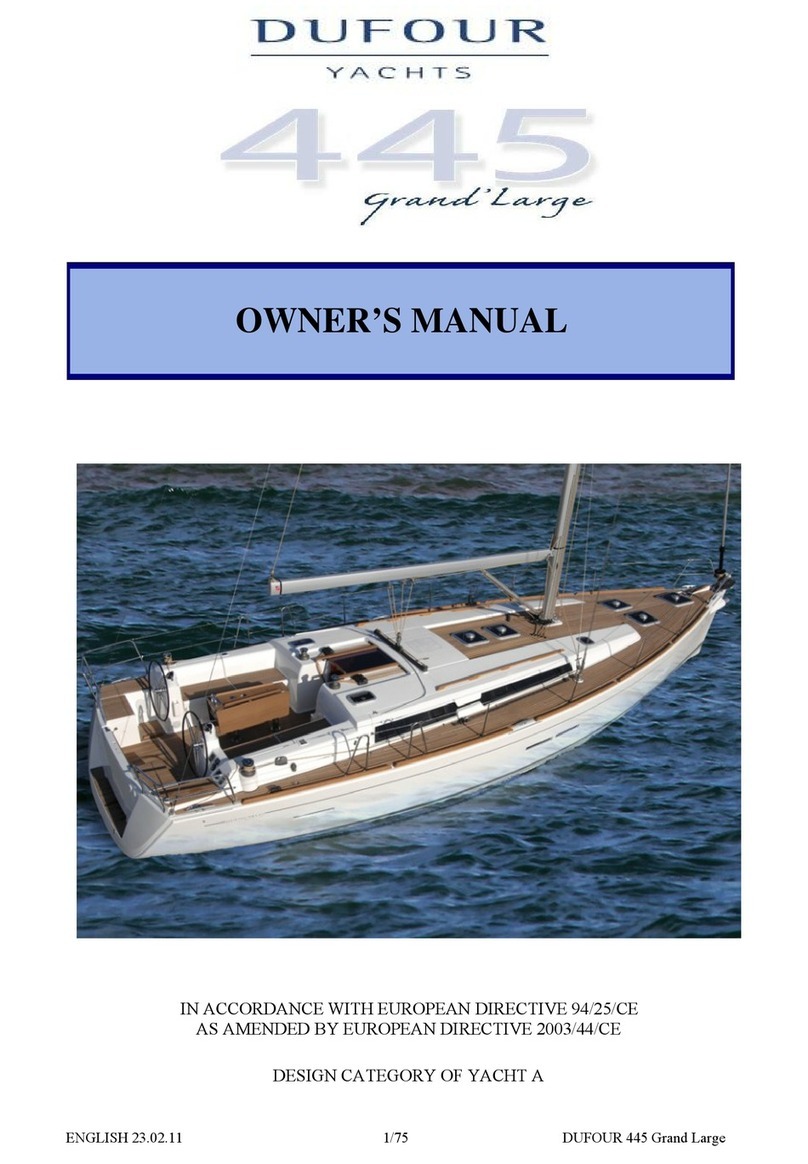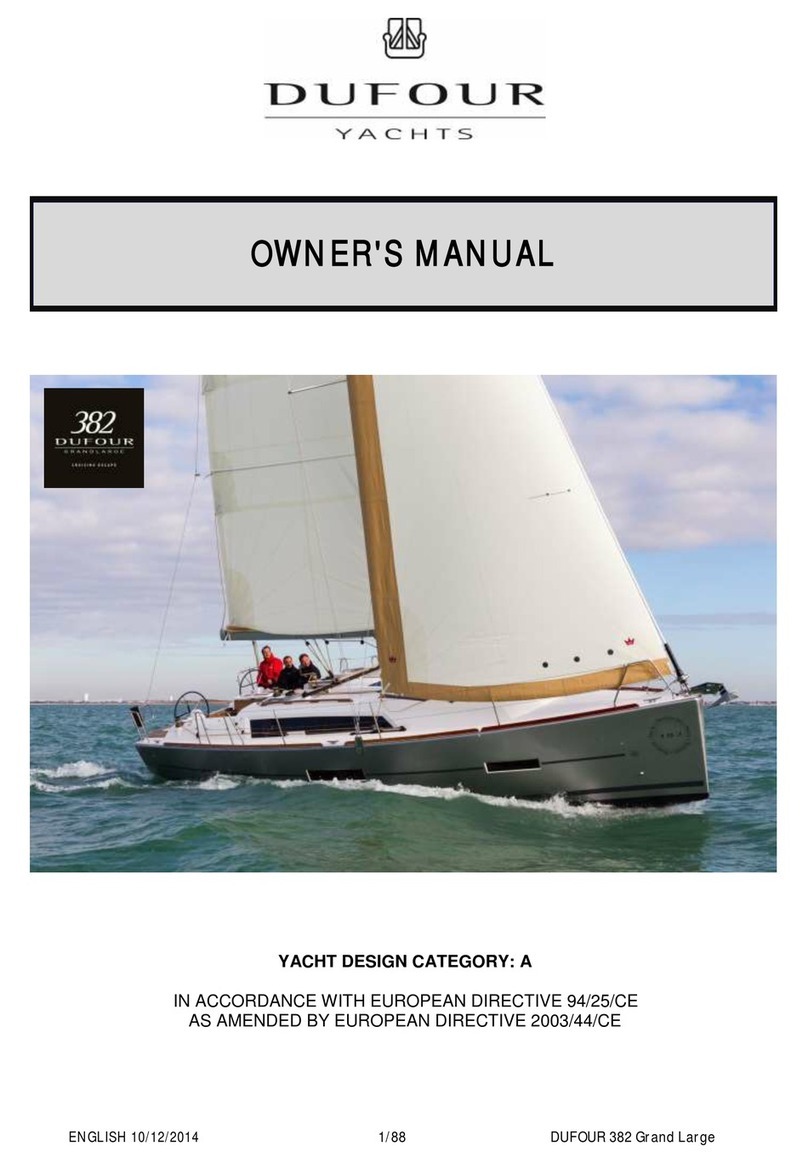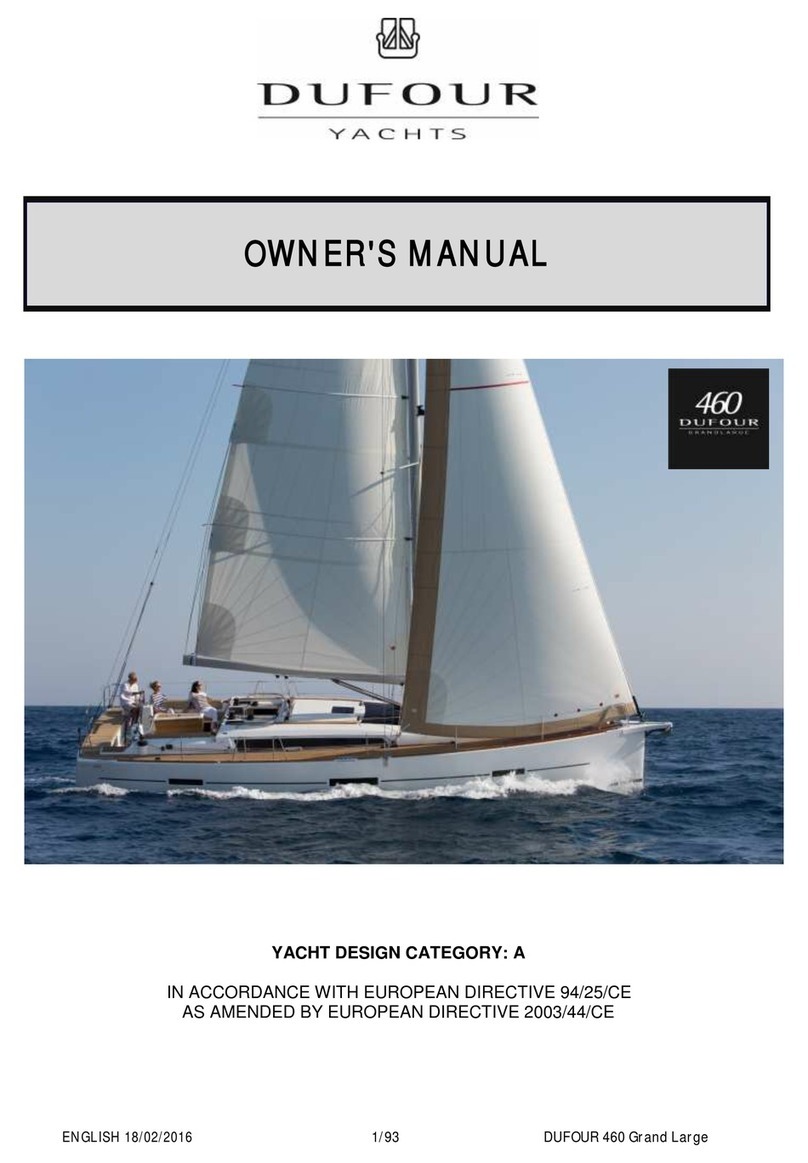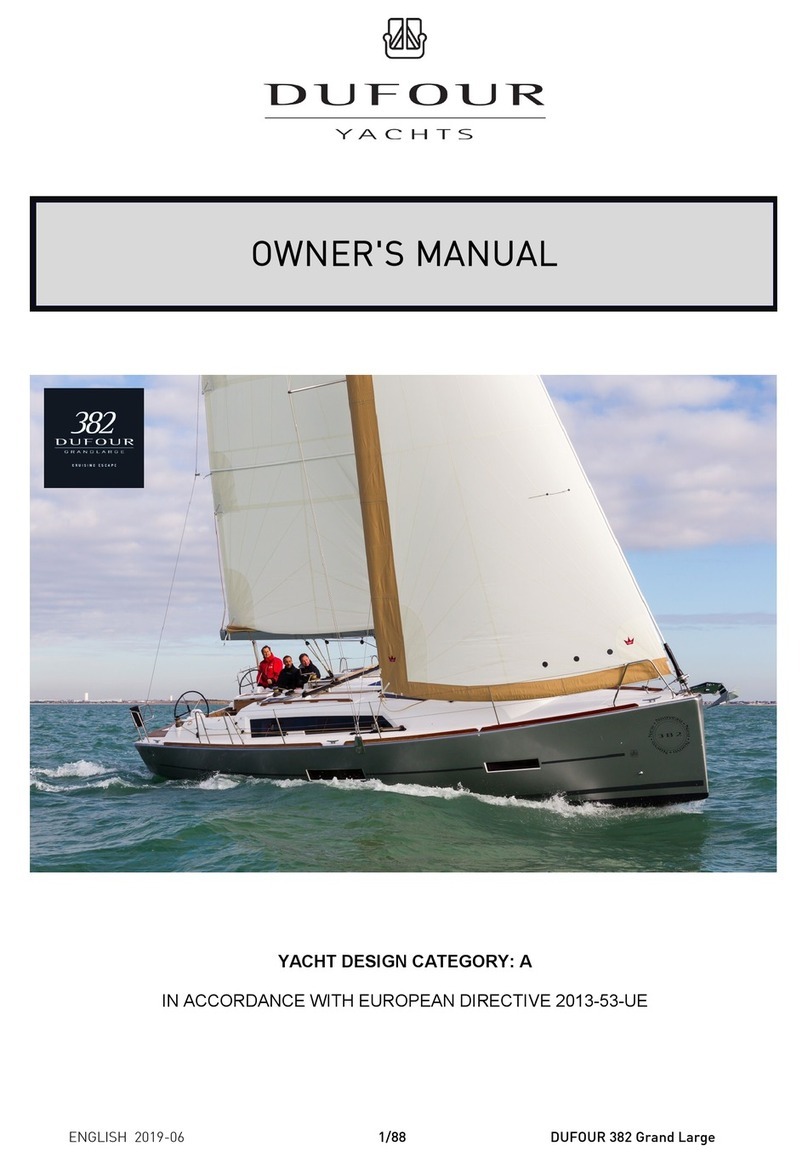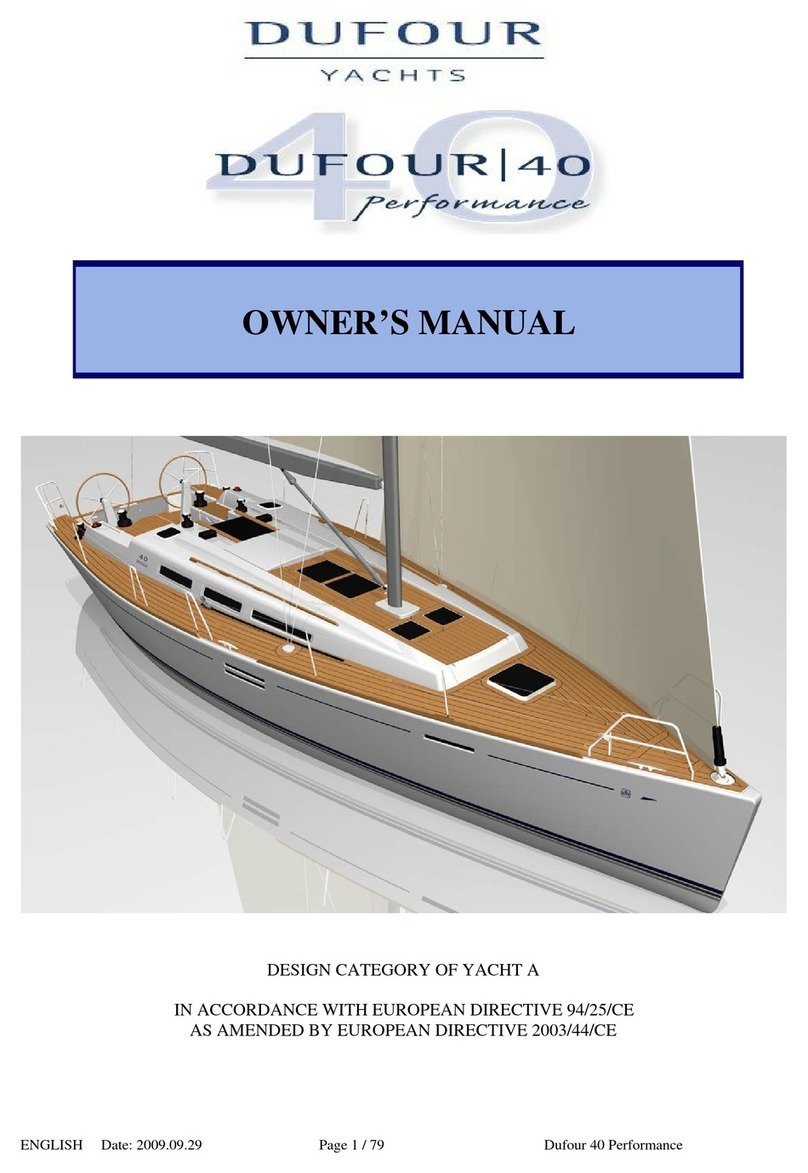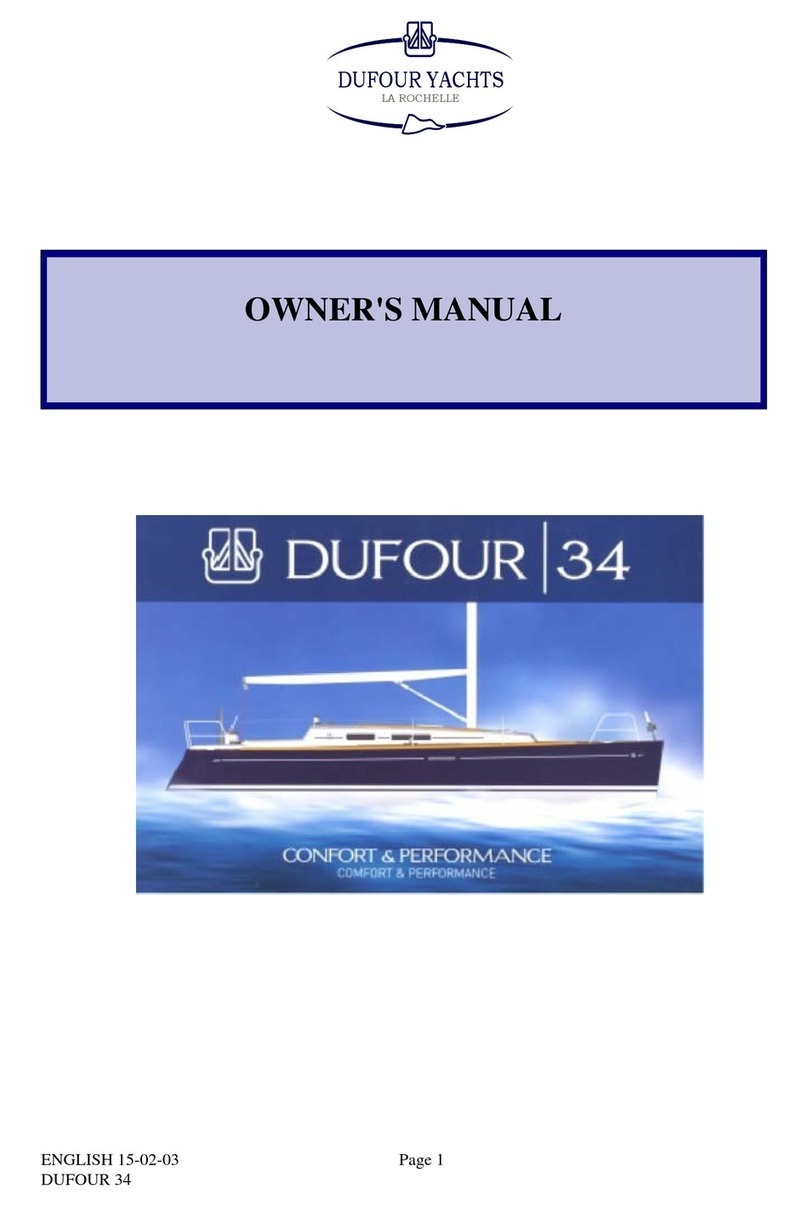
ENGLISH MAY 2004 Page3
DUFOUR 385
CONTENTS
INTRODUCTION___________________________________________________________________________5
I. GENERAL INFORMATION______________________________________________________________ 6
A. Design category of the yacht__________________________________________________________6
B. Certification _______________________________________________________________________6
C. Identification ______________________________________________________________________ 6
D. Builder plate_______________________________________________________________________ 7
II. MAIN CHARACTERISTICS______________________________________________________________ 8
III. ELECTRICAL SYSTEMS ________________________________________________________________ 9
A. Safety and operating instructions for the electrical system _________________________________ 9
B. Installing new equipment ____________________________________________________________9
C. Batteries _________________________________________________________________________ 10
D. Electric winch_____________________________________________________________________10
E. 220/110 Volt installation ____________________________________________________________10
IV. GAS INSTALLATION __________________________________________________________________ 12
A. Operation advice __________________________________________________________________ 12
B. Checking the system _______________________________________________________________ 13
C. Changing the gas cylinder___________________________________________________________ 13
V. DRAIN AND SANITATION SYSTEM _____________________________________________________ 14
A. Specifications of the drain system ____________________________________________________ 14
B. Pressurised fresh water pump _______________________________________________________14
C. Seacocks _________________________________________________________________________ 15
D. Operating the sea toilets ____________________________________________________________15
VI. FLOODING __________________________________________________________________________ 16
VII. FIRE PROTECTION ___________________________________________________________________ 16
A. Installation _______________________________________________________________________ 16
B. Safety instructions _________________________________________________________________ 17
VIII. ENGINE _________________________________________________________________________ 18
A. General precautions________________________________________________________________ 18
B. Exhaust gas emission _______________________________________________________________ 18
C. Safety____________________________________________________________________________ 18
D. Winterisation _____________________________________________________________________ 19
IX. FUEL INSTALLATION_________________________________________________________________ 19
X. STEERING SYSTEM___________________________________________________________________ 19
A. Steering wheels____________________________________________________________________ 19
B. Emergency tiller___________________________________________________________________ 20
XI. SAILING_____________________________________________________________________________ 20
XII. LIGHTNING PROTECTION ____________________________________________________________21
A. Maintenance______________________________________________________________________ 21
B. Protection of people during thunderstorm _____________________________________________ 21
XIII. ENVIRONMENTAL PROTECTION and SAFETY_______________________________________ 21
XIV.SAFETY EQUIPMENT _________________________________________________________________ 22
XV. HANDLING, TRANSPORTING, LIFT OUT ________________________________________________ 23
